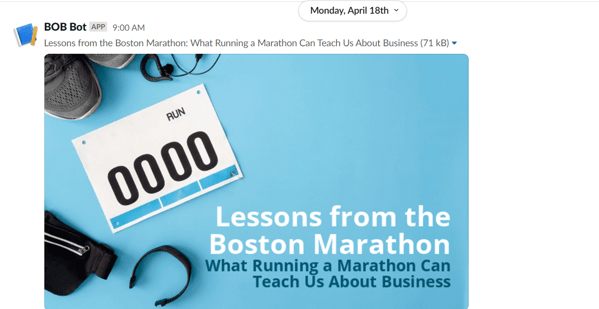We use nudges all the time in our personal lives to change behavior.
You might use a physical nudge when you want to get your partner’s attention.
You might use a digital nudge when you’ve sent an email and haven’t gotten a response after a few days.
You might use a verbal nudge when the line at the coffee shop has moved forward, but the person in front of you is on their phone.
Thoughtful, well-placed nudges can help drive engagement in your learning and development efforts and actually change culture and behavior for the better in your workplace.
Nudge theory in workplace learning
Nudge theory was first heavily promoted in 2008 by University of Chicago authors Richard Thaler and Cass Sunstein in their book, Nudge: Improving Decisions About Health, Wealth, and Happiness.
The theory promotes using indirect suggestions and positive reinforcement to change behavior. It doesn’t prohibit any activity or restrict choice; it simply helps users make desired decisions by capitalizing on automaticity, or one’s ability to do something or take an action without conscious thought.
Here are some examples of what nudges are and are not:
Nudge: HR rolling out an auto-enroll retirement savings option via payroll deduction.
Not a nudge: mandatory coaching for employees not saving for retirement.
Nudge: your phone vibrates to remind you of an upcoming deadline.
Not a nudge: your phone blocks frequently used apps until after you’ve marked your task as complete.
Why nudge theory drives learning engagement
When you tap an individual on the shoulder to let them know that the line has moved up, the person will likely walk forward. It’s an automatic response. A good learning and development nudge should work similarly.
A small, positive, often unnoticeable disruption to someone’s day like an email reminder, a dedicated Slack channel, or even a bulletin board about today's lesson placed near the break room can trigger someone to engage in learning. When the nudge is designed with the learner experience in mind—such as including a direct link to the learning module, it makes the decision so easy, that it’s almost involuntary. And ease of use is a vital component of engagement with learning initiatives.
The Groundwork for Nudge Design
Since a nudge is designed to change behavior, whether that’s a cultural shift related to diversity and inclusion initiatives, or an educational shift centered on defined soft skills, there are some steps you need to take before deciding how best to nudge your learners toward desired behavior.
1. Determine your team’s motivations.
From a behavioral perspective, what moves your learners? What are their attitudes and beliefs? What do they hold dear culturally and socially? What topics are they interested in learning about? Consult with your marketing department to develop strategies for reaching the emotional heartbeat of your team members; they’re using these strategies all the time to reach new customers.
2. Determine where your people hang out.
If your LMS is collecting dust, it’s not an ideal location to place a nudge. Take advantage of the communications channels and digital locations your people use regularly. Digital hotspots such as these are great because you can regularly push fresh nudges to subtly keep learning top-of-mind. It also makes accessing the content consistent, regardless of whether your employees are in the office or working remotely.
Many of our clients reserve a top-of-the-fold spot on their intranet, ERG pages, etc., or utilize their IM apps such as Slack or Microsoft Teams to display Blue Ocean Brain microlessons. The colorful imagery and relevant topics are refreshed daily and catch their learners’ eyes in a way that static learning modules in the LMS cannot.
 Blue Ocean Brain's daily microlearning lesson blended running the Boston Marathon with leadership skills on the day of the race. Videos, articles, and knowledge checks tapped into the uber-popular topic to grab learners' attention.
Blue Ocean Brain's daily microlearning lesson blended running the Boston Marathon with leadership skills on the day of the race. Videos, articles, and knowledge checks tapped into the uber-popular topic to grab learners' attention.
3. Use the EAST framework.
To change behavior, any nudge you design must be:
Easy: If it takes four clicks to access your learning module, are employees really going to click through? If the instructions are difficult, will they spend their time reading them? Keep things as simple as possible.
Attractive: We’re attracted to things that are designed in a pleasing, organized way. Make it impossible for the user not to engage because it looks too good to pass up. Microlearning must be modern, eye-catching, relevant, and discussion-worthy, and the behavior nudges that successfully drive employees to that content must be the same.
Social: Will they have the opportunity to chat about their learning afterward on Slack or during a meeting? Are they able to make a public pledge to complete a module? Is there a prize for being the top learner for the month? Just knowing that they’ll be talking about it afterward or have their success displayed prominently will boost the likelihood of your team’s participation.
Timely: Not only should learning nudges be delivered at the right time, but they should also be delivered with just enough time. Employees often have trouble getting excited about results that aren’t immediately apparent, so nudging your team about something too far out can be counter-productive.
4. Test your nudges.
Not every nudge you try will work but real change happens when you’re willing to do some beta testing and adapt when you don’t get the results you want the first time. What works for some learners will not work for others, so try to develop and test as many as you can using those hotspots we talked about earlier. Solicit feedback from learners and their managers to further tailor your approach based on your organization's needs and workflow.
If your teams are resisting culture shifts, struggling with upskilling, or simply not engaging with your learning initiatives, give them several positive, non-obtrusive nudges in the right direction. Then, monitor whether your approaches work and be willing to shift gears to make sure that your educational content is delivered and retained. Investing in your people's growth is one of the best ways to retain and recruit top talent in your industry. Making learning a priority at all levels will help your organization evolve and adapt to new challenges.
For more information on how to utilize nudges in the workplace, click here to schedule a consultation to learn how Blue Ocean Brain can help you achieve your organization's learning initiatives.



![[Guide] Why L&D is the Key to Achieving Your Company Culture Goals](https://blog.blueoceanbrain.com/hs-fs/hubfs/1283373_Images%20-%20BOB_4_012722.png?width=760&name=1283373_Images%20-%20BOB_4_012722.png)
